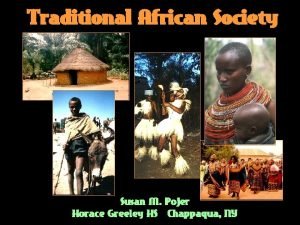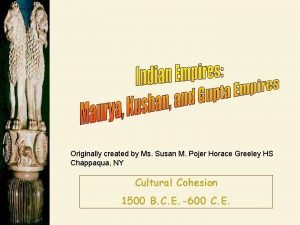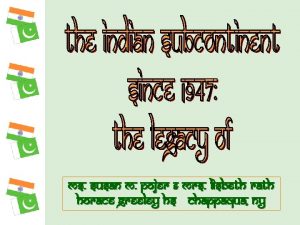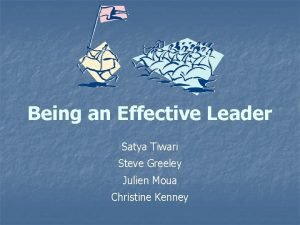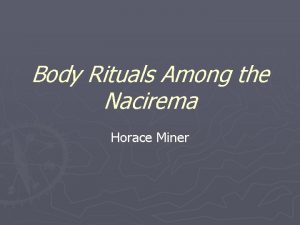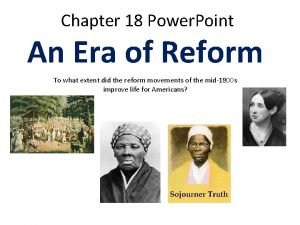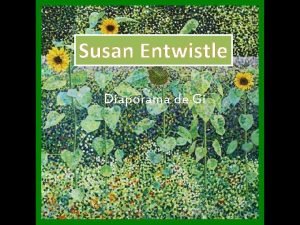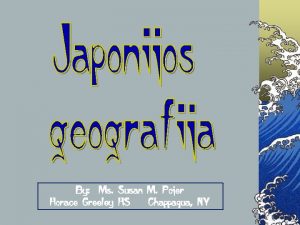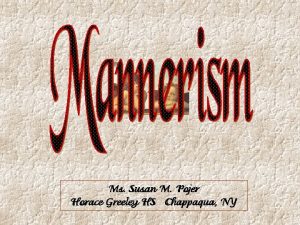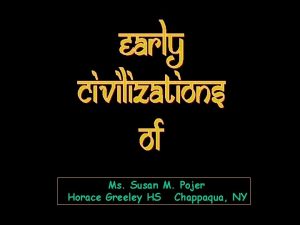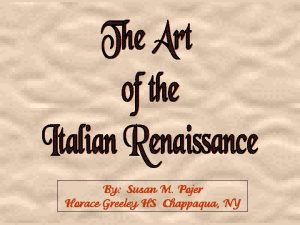Ms Susan M Pojer Horace Greeley H S


































- Slides: 34

Ms. Susan M. Pojer Horace Greeley H. S. Chappaqua, NY www. pptpalooza. net/PPTs/Global. Studies/Buddhism. ppt July 15, 2011 Modified by N. Power

Buddhism in the Subcontinent

The essence of Buddhism Ø The “middle way of wisdom and compassion. ” Ø 2, 500 year old tradition. Ø The 3 jewels of Buddhism: § Buddha, the teacher. § Dharma, the teachings. § Sangha, the community.

Siddhartha Gautama (563 -483 BCE) Ø The historical Buddha, or Shakyamuni Buddha Ø Born in NE India Ø Raised in great luxury to be a king. Ø At 29 he rejected his luxurious life to seek enlightenment and the source of suffering.

Lived a strict, ascetic life for 6 yrs. http: //www. bing. com/images/sear ch? q=shakyamuni+buddha&view =detail&id=CA 6783 CE 858 E 49104 5 B 9 D 660975 B 31 CA 7664 FE 53&fir st=0&FORM=IDFRIR July 15, 2011

Ø Rejecting this extreme, sat in meditation under a bodhi tree, and found nirvana. Ø Became “The Enlightened One, ” at 35.

What is the fundamental cause of all suffering? Desire! Ø Therefore, extinguish the self.

Four Noble Truths 1. There is suffering in the world. To live is to suffer. (Dukkha)

Four Noble Truths 2. The cause of suffering is selfcentered desire and attachments. (Tanha)

Four Noble Truths 3. The solution is to eliminate desire and attachments. (Nirvana = “extinction”)

Four Noble Truths 4. To reach nirvana, one must follow the Eightfold Path.

Eightfold Path Nirvana Ø The union with the ultimate spiritual reality. Ø Escape from the cycle of rebirth.

Buddha’s head: Pakistan

Mandala: Wheel of Life Motif

Types of Buddhism in the Himalayas Ø Theravada Buddhism Ø Mahayana Buddhism Ø Tibetan Buddhism

Theravada Buddhism Ø The oldest school of Buddhism. Ø The “Way of the Elders” or the “Small Vehicle. ” Ø Found in southeast Asia, including Burma (Myanmar). Ø The monastic life is the best way to achieve nirvana. Ø Focus on wisdom and meditation. Ø Goal is to become a “Buddha, ” or “Enlightened One. ”

Mahayana Buddhism Ø Seek guidance from Boddhisatvas, enlightened beings who choose to return to the world to help people. Ø Goal : The enlightenment of all humanity through self-sacrifice of those enlightened few. Ø Focus on lay people, not just monks, reaching enlightenment.

Seated Boddhisatva – 16 c Bhutan

bodhisattva

Bodhisattva • An enlightened being who chose to return to the world to help other beings instead of staying in Nirvana. • Prominent in Tibetan Buddhism. • The most commonly revered bhodisattva in Tibet is Avalokiteshvara.

Tibetan Buddhism Ø A specialized form of Mahayana. Ø Also called Tantric, Vajrayana or the Diamond Vehicle. Tantric refers to scriptures that describe rituals. Ø Focus on Boddhisatvas who help lay people. Ø Involves chants and rituals. Ø Rituals include a bell and avajra. Ø Traditionally, monks & lamas are men, not women.

• The bell symbolizes wisdom and the vajra symbolizes a thunderbolt and an indestructible substance. http: //www. bing. com/images/search? q=vajra&FORM=BIFD July 27, 2011

• Tibetans also use rosaries, prayer wheels and prayer flags to pray. http: //www. bing. com/images/se arch? q=Tibet+prayer+wheel&vi ew=detail&id=33 E 2 BAF 0215 C 573 EA 69 B 41268 FF 203 FA 38 B 4 E 4 AA&first=211&FORM=IDF RIR July 27, 2011

http: //www. bing. co m/images/search? q =Tibetan+rosary&vi ew=detail&id=2 D 62 F 594 F 717 AA 020 FE C 2 D 62 F 594 F 717 A A 020 FEC&first=0 July 27, 2011 • Next slide: http: //www. bing. com/images/search? q=Tibet+prayer+flags&view=detail &id=A 5 C 717 F 611 AE 65758793061556158697 FE 68 AD 3 F&first=0&FOR M=IDFRIR July 27, 2011


Activity: make prayer flags Divide students into small groups. Each group gets the same size piece of cloth but in different colors. The students design and decorate their flag with a prayers of gratitude and/or requests. They may include pictures. Glue all the flags to a string and hang the flags in the classroom or outside.

funerals • Two ways to free the deceased: – Cremation – Sky burial In sky burial, the flesh is cut off of the and vultures come and take the flesh

Sky Burial http: //www. bing. com/images/search? q=Tibet+%22 sky+burial%22&view=detail&i d=EEE 30981859 FA 886 BAC 3 EE 4 F 9 F 43 F 9676 BF 2 D 01 C&first=0 July 28, 2011

The 14 th Dalai Lama

• Watch the film “Unmistaken Child’

stupas • Objects of a special shape that contain relics of the Buddha or famous lamas • Range in size from fitting in the palm of your hand to large buildings

http: //www. bing. com/images/search? q=stupa&view=detail&id=C 4 FEC 524 EC A 1 E 09 B 6 C 864 CB 5236 DDC 06 A 5 E 59 BD 8&first=31&FORM=IDFRIR July 27, 2011

Activity: make stupas using stupa molds, clay and rice. • Order stupa molds from: http: //www. tibetanspirit. com/shopdisplayproduct s. asp_Q_id_E_166_A_cat_E_Tsa+Molds_ A_catid_E_136_A_maincat_E_Ritual+Items

Directions for making stupas • Rub oil into the inside of the stupa mold. • Fill the mold with clay and then turn the clay inside the mold until it spins smoothly. • Insert a grain of rice into the bottom. • Remove the clay from the mold by sticking clay on the end and pulling the clay out.
 Westward expansion timeline
Westward expansion timeline Horace greeley go west
Horace greeley go west Susan pojer
Susan pojer Susan pojer
Susan pojer Susan pojer
Susan pojer Susan pojer
Susan pojer Susan pojer
Susan pojer Susan pojer
Susan pojer Susan pojer
Susan pojer Susan pojer
Susan pojer Susan pojer
Susan pojer Susan pojer
Susan pojer Susan pojer
Susan pojer Steve greeley
Steve greeley Mirko pojer
Mirko pojer Mirko pojer
Mirko pojer Mirko pojer
Mirko pojer Mirko pojer
Mirko pojer Mirko pojer
Mirko pojer Horace and morris but mostly dolores
Horace and morris but mostly dolores Holy-mouth-men
Holy-mouth-men Horace hp
Horace hp An era of reform answer key
An era of reform answer key Mistress seema rani
Mistress seema rani Longinus contribution literary criticism
Longinus contribution literary criticism Welcome performance in school
Welcome performance in school Horace pluck
Horace pluck Poema ars
Poema ars Horace taylor the verdict september 25 1899
Horace taylor the verdict september 25 1899 Horace lau
Horace lau Lonnie trumbull
Lonnie trumbull Susan rodger duke
Susan rodger duke Electric circuits by james nilsson and susan riedel
Electric circuits by james nilsson and susan riedel Www.hsfpp.org
Www.hsfpp.org Susan entwistle
Susan entwistle






